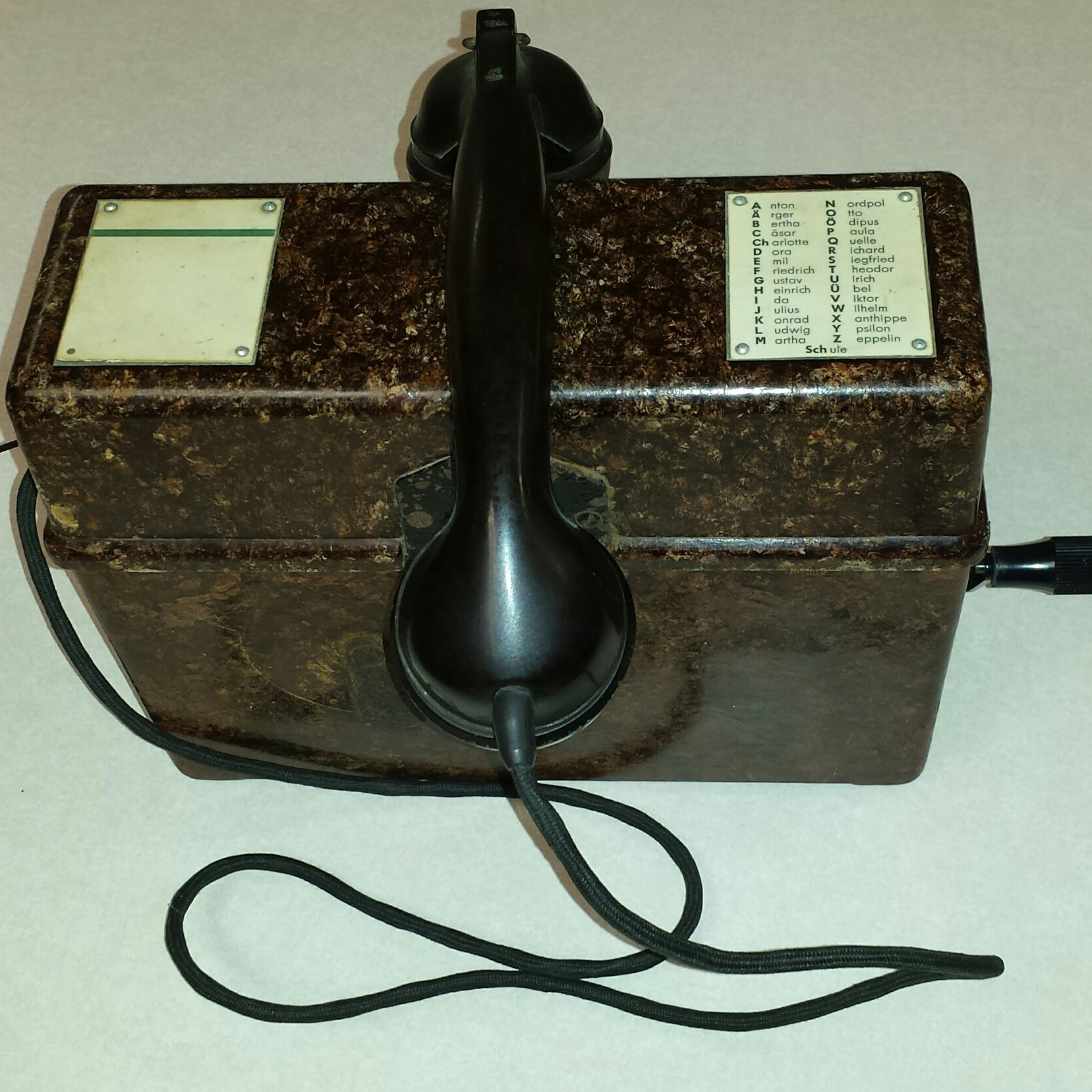The Vermittlungskästchen is a type of modular switchboard. Each module consists of a wooden box. On top of the box are field telephone line terminals (La and Lb/E) and a socket for an incoming call indicator relay (Weckerfallklappe).
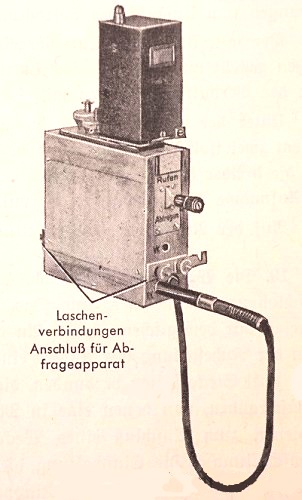
On the front of the box is a Kellogg Switch with three positions: Answer (Abfragen), Neutral, and Call (Rufen). There are also two plug sockets, VK and RK. Lastly, there is a patch cord.
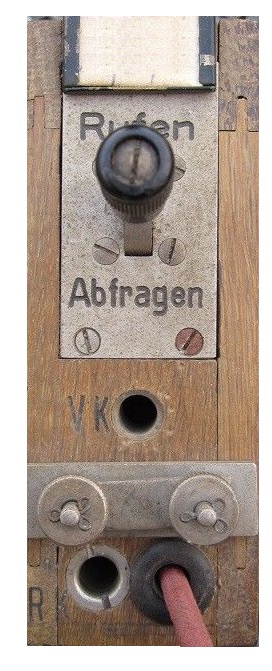
The back of the box has a mounting bracket and a wiring diagram, as well as a small maker’s plate.
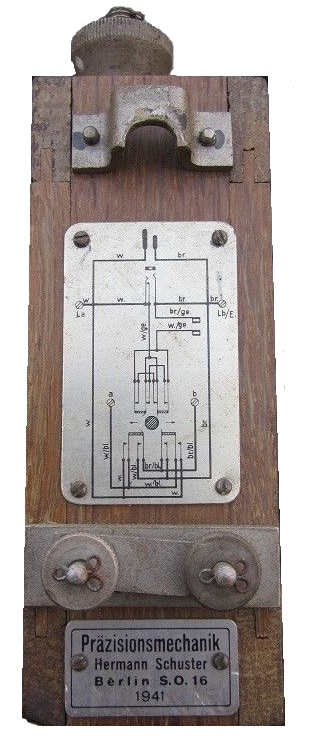
The incoming call indicator relay has window (fenster) on the front. When a call comes in on the field telephone line terminals, the relay is energized. This drops a yellow flag which appears through the window. The relay has two auxiliary contacts which close, powering an optional DC alarm bell. The bell can be connected to two terminals (Klemmschnrauben für Gleichstromweckerkrois) located at the base of the relay. The relay is reset by pressing a button (Rückstelldruckknopf) on top.
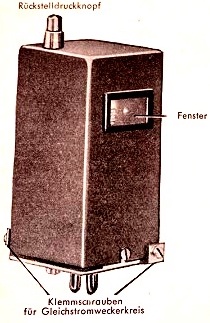
On the lower front (a) and lower back (b) of the Vermittlungskästchen box are metal strips. Each strip has two thumb screws. The operator’s field telehone (e.g. a FF33) is connected to these strips by two short wires and the thumb screws.
The Vermittlungskästchen module is pretty much useless by itself. So, two or more modules are hooked together mechanically and electrically by latches and thumb screws on the metal strips.
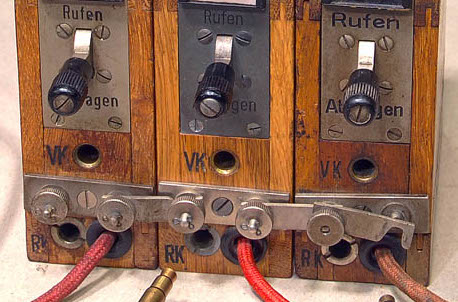
In Part 2, I will explain how the Vermittlungskästchen modules work.
For more information about modular switchboards, and field switchboards in general, check out my book: https://www.lulu.com/en/us/shop/rotwang-manteuffel/world-war-2-german-field-telephone-equipment-a-basic-guide-for-reenactors-and-historians/paperback/product-976w9q.html?page=1&pageSize=4

